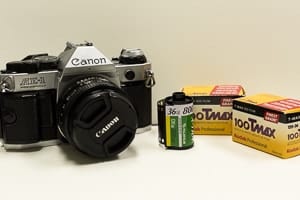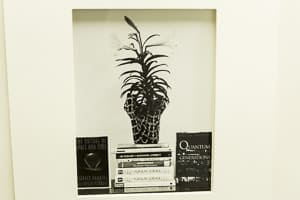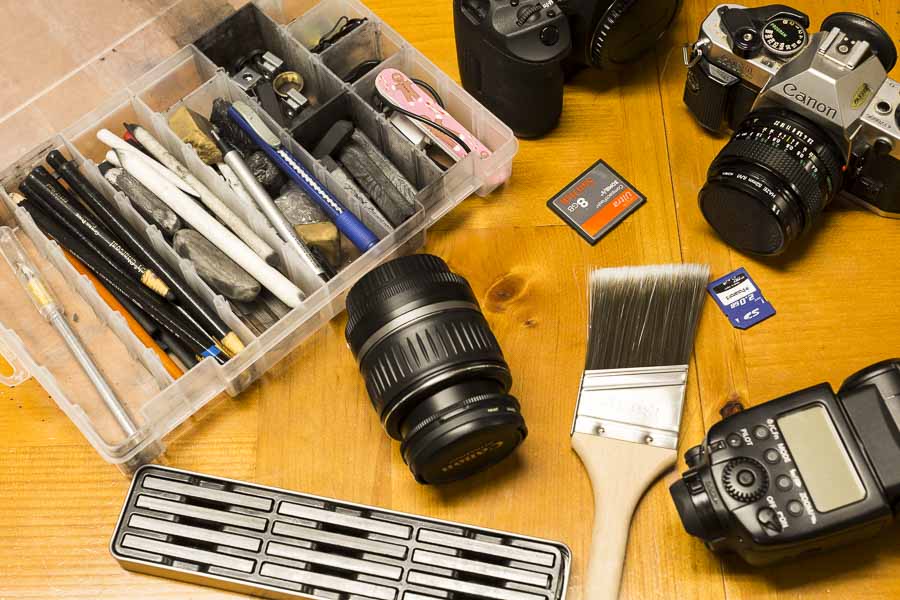Many unexpected costs come along when you study photography in a college program. This article is going to look at the most probable, general, and largest expenses that come with studying photography in college.
Going to college is an amazing opportunity and experience. With it comes freedom and a chance to grow, learn, make life-long friends, and pursue dreams. But what if your dream is to be an artist? To be a photographer, no less? In today’s seemingly hyper-saturated photographic communities where social media would have everyone convinced they are exceptional at “painting with light”, is going to school for photography worth it? Do the benefits outweigh the cost?
Absolutely.
However, let me prepare you for 10 unexpected costs that are encountered when studying photography. To maximize the helpfulness of the article, I have included an estimation of each cost’s impact after each point.

Cost # 1: Supplies for OTHER art classes
When you study photography in school, you are frequently required to take additional art classes. No artist’s study is truly complete without a survey into other methods of self-expression, and depending on the school you may have to buy items such as: charcoal, sketchpads or books, fine art paper for drawing, painting, etc., wood, hot glue gun/hot glue (such as for a 3D design, or sculpture class), fabric for textile classes, metals for jewelry making or sculpture, and more. It is good practice to research any required courses for your degree track, and maybe even email the school or ask previous attendees of the institution about their experiences. Every school will be slightly different, but you will undoubtedly spend more money than you initially thought you would in your studies outside of your planned field. This cost is obviously going to be less if you’ve already studied some of the other mediums (e.g. you already have charcoals because you love to draw).
Expect to spend: $200 -$300 over the course of your undergraduate education.
Cost #2: Camera (AND a film camera)
Okay, I know this is a website literally called “Improve Photography”, 
While we’re talking about cameras, you need to buy a film camera. “But we’re in the age of digital!” You’re not wrong, however a fully rounded understanding of the art of photography requires studying traditional methodologies (specifically darkroom development processes). In order to do this, you need a film camera. Fortunately, many are available at fairly inexpensive prices, such as this Canon AE-1 available on Amazon. You can also find used and inexpensive ones on eBay, and, if you understand and accept the risks, Craigslist and Facebook Marketplace. I have had many great purchasing and selling experiences with the latter two, but Amazon and eBay are far safer and more secure for yourself and anyone with whom you may interact.
Expect to spend: $400 – $700 for your cameras (fortunately you should only have to spend this once!)
Cost #3: Memory card/Film
Seems like a “duh”, I know. But it was important to call out #2, so this naturally follows. You need to purchase whatever form of memory your particular camera model uses (SD card/CompactFlash™/etc). You need something on which to store and transfer your beautiful images! Related – you need film for your film camera. I had people in my own class who seemed baffled by the understanding that we were expected to buy our own film. The reasoning for this is simple: the direction you go with your art may be directly influenced by the type of film you use. Different kinds of films respond to different colors, light, and environments in diverse ways, and you may have a particular kind of “look” you want. In addition, not everyone uses a 35mm camera! Some people still prefer a medium format film, which uses 120 film, not 35mm (if you’ve never had a chance to shoot one, do it! You’ll never be the same). Also, the schools generally will expect the student to provide their own film.
Expect to spend: $50 – $400 over the course of your undergraduate education (very dependent on how much film you shoot as well as what type)
Cost #4: Paper
To be clear: I am not talking about loose leaf paper, or even a sketchbook. Digital Photography in the art world is still generally focused on the concept of a photograph being incomplete until it has been printed. Printing paper for photography is EXPENSIVE. This Epson photo paper was the cheaper paper that was used in my program for digital printing. That’s $25! For a package of 50 sheets! 50 sheets! From there, depending on the project, you could order larger sizes, other types of paper, or eventually roll paper! Roll paper can vary in cost from around $60 to astronomically higher prices, depending on how wide, and how high end, you want the roll! It’s a far more financially efficient way to print, but it’s still a good chunk of change that can create sticker shock for anyone who is not prepared.
Tangentially related is darkroom paper. When you take a film class, you have to still spend money on paper, except now it is on film paper for the darkroom. The costs are fairly similar, but the beautiful fine art paper is extremely expensive. The Ilford fiber paper I use is $28 for a box of 25 sheets as of this writing.

Expect to spend: $75 – $200 over the course of a single semester! This is one of the single largest unexpected expenses that I ran into while in school.
Cost #5: Printing
There are two general possibilities in regards to printing. Some schools have the benefit to have a photo printing lab with professional grade photo printers, such as the Epson Pro Stylus™. Some other schools partner with, or send work out to labs to get printed. Learning to print and handle your own work is definitely what you should aim for, but it’s not required. In either instance, you will have to pay a cost to the photo lab in order to use their printers – this helps fund the purchase of more ink and any repairs or replacements that may need to occur. Some schools utilize “print cards” that can be marked off as images are printed, others can actually scan or enter student IDs into computer systems to charge your account. While the approach may vary, the result is the same: a lot of money spent trying to make your images look perfect.
Expect to spend: $50 – $200 over the course of a semester.
Cost #6: Equipment (flashes/reflectors/frames/etc)
This is a little bit of a catch all. I find that, especially in regards to equipment, there can be a huge divergence in expectation depending on the school, the department, and even the instructors. My school had available external flash units that students were able to rent, but not all schools do. In addition, photography students are frequently expected to create gallery level work. Purchasing matte board and learning to matte properly, as well as frames, in order to partner with local and on-campus galleries is an inevitable expense. The best part about this (other than learning to matte your images, of course) is gaining a much higher appreciation for anyone who mattes images for a living, as it can be aggravating to create clean cuts with precise measurements.
Expect to spend: $100 – $800 over the course of your undergraduate education.
Cost #7: Props

This cost can be mitigated in most situations. If you have friends or family, you could ask to borrow props when needed (please always make sure to return the props in better condition than you received them). Many times, you can also create your own props through imaginative DIY projects. You may run into a project or an idea, though, where you find yourself desperately needing to buy a $20 item from Amazon or local store, because you can’t conceive of a way to fake what that specific object would bring to your image. There’s nothing wrong with this, it is just an expense that’s good to keep in mind.
Expect to spend: $0 – $300 over the course of your undergraduate education.
Cost #8: Creative Cloud License
While this is not something that is essential to your work, it is extremely useful to be able to work on your digital images away from your computer lab. Some schools have 24-hour computer labs with the creative suite loaded on the machines, though I’ve found this to be rare. Most schools prefer to have that expensive equipment monitored, and it’s hard to keep it staffed that whole time, so eventually there will be a period where the lab is not open. Being able to work with Bridge, Photoshop, and/or Lightroom outside the lab can be invaluable to your time – working on images over breakfast, culling down large shoots while lying in bed, or in the case of commuters just being able to work at home. Not to mention if you want to be a photographer, you should definitely get these programs regardless!
There are plenty of wonderful editing tools out there outside of the Adobe world, but most schools focus on utilizing specifically Bridge and Photoshop. The beautiful thing is Adobe offers (as of this writing) two great plans: a photography plan for $9.99 a month which includes Photoshop and Lightroom (and by extension, Bridge), and a College Student plan for $19.99 a month which includes EVERY CREATIVE SUITE program. Hands down the latter is the best deal, especially if you think you may utilize the other programs. If not, save your wallet for other expenses and just go with the photography plan.
**This cost may be changing with the unveiling of Adobe's new changes in regards to the Lightroom CC and Lightroom Classic programs. It would be beneficial to verify with Adobe what current plans are available at the time you are looking to subscribe.**
Expect to spend: $10 – $25 a month
Cost #9: Tripod
If you have spent any time at all on Improve Photography, or in any tutorials on photography, you know how important a tripod is. When you study in school, you will start to realize even more so how important a tripod is for great work. Hand holding a shoot when you’re pushing the limits of camera shake can be okay for work that’s going on Instagram or Facebook, but certainly not when you’re going to print off full size images at 300 dpi resolution! You can see even the edges that are only a little soft during your assignment critiques (that’s what art students do in place of tests – everyone looks at your work and offers constructive criticism to help you get better). A tripod can mean the difference between a pass or fail (both in grade and in successful artwork)! You don’t need an expensive tripod, you can get away with something like this Ravelli. Just know that the better you get to know your work, your camera, and your tripod, the more you’ll wish you invested in something more like this Oben. Head over and check out Jim Harmer’s Best Professional Tripods Under $200 for more in-depth suggestions and comparisons.
Expect to spend: $15+ (There’s a tripod for every budget, you need to figure out what your essential needs are)
Cost #10: External Hard Drive
This is good for any photographer’s workflow. Using an external hard drive as a backup for your images is extremely good practice, and I highly recommend you invest in a hard drive for just that purpose. This hard drive, however, should be specifically for safe transport and storage of any images you have for your class. These images should also be backed up to your primary backup at regular intervals. Many schools request portfolio reviews for acceptance into programs (usually after taking a couple of introductory photography courses), and some even require a final portfolio review in order to graduate. That means two to four years (maybe even more, if you’re a non-traditional student) after you capture, edit, and print the images, you may need to call up digital copies of the images again. Save yourself time and panic, and have an external hard drive that you use for just your photography courses. A jump drive might seem like it would be good enough, but I promise it won’t. You will have shoots with hundreds of RAW files, some PSD or TIFF layered files, and JPGs for your projects. Really common in classes is the Seagate Ultra Slim™. Here you can find the 2TB model for less than a hundred dollars. The best part is that once you finish school, you can continue to use this drive as an additional layer of backup for your images!
Expect to spend: $30 – $125 (this should be a one-time expense as long as you invest in at least one or two TBs in the beginning)
BONUS! Cost #11: Time

Printing an image, either in the darkroom or from the computers, can take several hours. Getting contrast right, dodging and burning, creating any needed masks, these are the things that take time in the darkroom. Color correcting, blending, fixing digital errors, these are the things that take time when printing digitally. Time is money, and you will lose all kinds of time while studying photography. Friends, social events, and sleep are not nearly as common for the art student as movies would make one think. Late nights printing, building or tearing down sets, reworking scenes that aren’t effective, and just general crying at the existential crisis that occurs during art school as you begin to question your life choices, are all things that take far more of a student’s time than you may think.
Expect to spend: At least twenty hours more than expected, per month, on art.
Overall, there are many things that may be unexpected expenses for art students. Some honorable mentions are models (for those that prefer having people in their photos, but who have unreliable acquaintances), gas (for driving to locations – especially for those who love to use different architecture styles or street photography in their images), archival quality sheet protectors for your printed images, negative sleeves, a professional portfolio, and sanity (because you will absolutely start to question yours after your third hour printing an image and questioning if there is a color cast present). The costs are varied, and may be slightly different for you depending on where you go to school, but just know that even though these costs may feel burdensome, with careful planning and a strong desire to make it work, to make art, I believe in your ability to afford all of the things you need to succeed.


I am on ssi and disability .would like to apply for grants
wantto apply